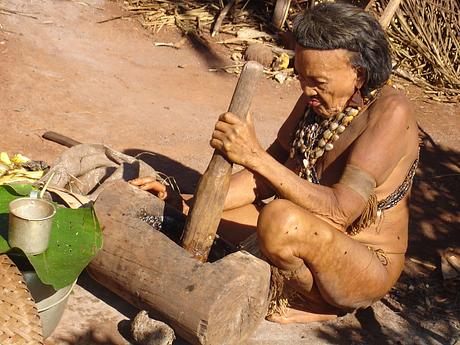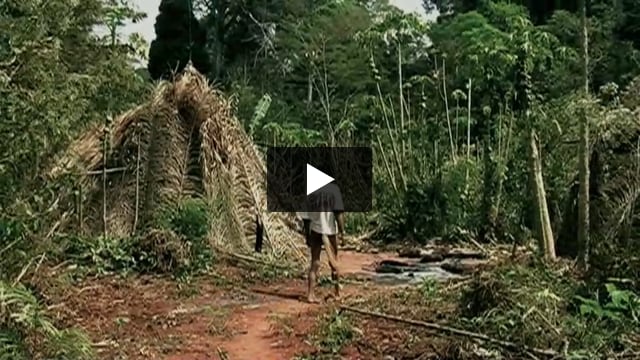Amazon tribe down to five as oldest member dies
October 19, 2009
 © Marcelo dos Santos
© Marcelo dos SantosThis page was last updated in 2009 and may contain language which is now outdated.
‘The final stages of a genocide’
The Akuntsu tribe in the Brazilian Amazon has lost its oldest member, Ururú, leaving the tribe with only five surviving members.
Ururú was the oldest member of this close-knit, tiny group and an integral part of it.
Altair Algayer, head of FUNAI’s (Brazilian government Indian affairs department) team which protects the Akuntsu’s land said, ‘She was a fighter, strong, and resisted until the last moment.’ In addition, the oldest-surviving Akuntsu, Ururú’s brother Konibú, is seriously ill.
Ururú witnessed the genocide of her people and the destruction of their rainforest home, as cattle ranchers and their gunmen moved on to Indigenous lands in Rondônia state. Rondônia was opened up by government colonisation projects and the infamous BR 364 highway in the 1960s and 70s.
With Ururú dies a large part of the historical memory of this people. While we shall perhaps never know the full horrors inflicted on the Akuntsu in the last half century, today’s survivors say their family members were killed when ranchers bulldozed their houses and opened fire on them. The two surviving men, Konibú and Pupak, have marks on their bodies where bullets entered as they fled.
FUNAI found the remains of houses which had been destroyed by ranchers who were clearing the forest for cattle pasture. The ranchers attempted to hide evidence of the crime, but wooden poles, arrows, axes and broken pottery were discovered.
When the Akuntsu were contacted by FUNAI in 1995 they numbered seven. The youngest, Konibú’s daughter, died in January 2000 when a tree fell on her house.
Today they live in a territory officially recognised by the Brazilian government, where FUNAI protects their land from invasion by surrounding ranchers.
Survival’s Director Stephen Corry said today, ‘With Ururú’s death we are seeing the final stages of a 21st century genocide. Unlike mass killings in Nazi Germany or Rwanda, the genocides of Indigenous people are played out in hidden corners of the world, and escape public scrutiny and condemnation. Although their numbers are small, the result is just as final. Only when this persecution is seen as akin to slavery or apartheid will tribal peoples begin to be safe.’
The story of the Akuntsu, their neighbours the Kanoê, and the elusive ‘Man of the Hole’ is graphically told in a new film, Corumbiara. The Akuntsu also feature in Survival’s short film, Uncontacted Tribes.




